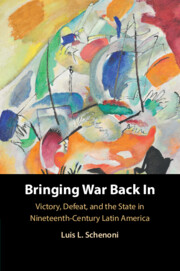5 - War Outcomes and State Building
from Part II - Region-Wide Analyses
Published online by Cambridge University Press: 14 November 2024
Summary
What was the effect of war outcomes on key indicators of state formation in a post-war phase? In this chapter I demonstrate that victors and losers of war were set into different state capacity trajectories after war outcomes were revealed. I do this using a set of cutting-edge causal inference techniques to analyse the gap in state capacity that was generated between winners and losers in the time-period of most stringent warfare (1865-1913). After substantiating that the outcomes of these wars were determined by exogenous or fortuitous events, I provide a short description of my treatment—i.e., defeat—and outcomes—i.e., total revenues and railroad mileage as key indicators of state infrastructural capacity. My estimator, a difference-in-differences model, shows defeat had a negative long-term impact on state capacity which remains remarkably robust even after relaxing key assumptions. Finally, I use the synthetic control method to estimate how state capacity in Paraguay and Peru would have evolved in a counterfactual world where these countries were spared the most severe defeats in late nineteenth-century Latin America.
Keywords
- Type
- Chapter
- Information
- Bringing War Back InVictory, Defeat, and the State in Nineteenth-Century Latin America, pp. 96 - 122Publisher: Cambridge University PressPrint publication year: 2024

